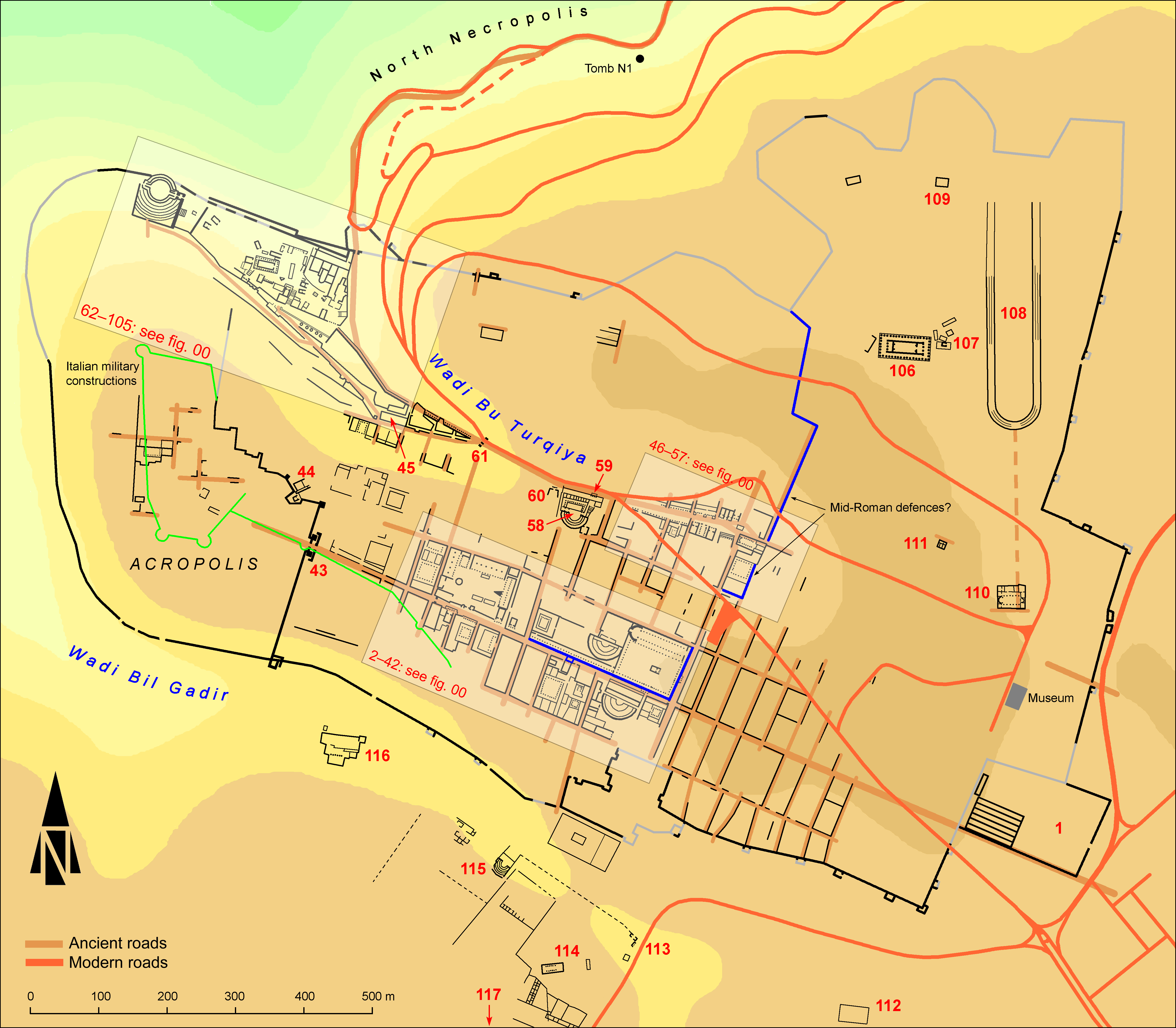EpiDoc XML:
IGCyr0638002
Trismegistos ID:
6106
Source description
Support: Left part of a white marble panel broken at right (w: 0.205 × h: 0.25 × d: 0.04).
Layout: Inscribed on the face.
Letters: 0.011-0.015; pi with shorter right hasta and overflowing upper bar, sigma with parallel outer strokes, phi with flattened loop, widening upsilon.
Date: Ca. 150 BC (lettering).
Findspot: Found before 1956 at Cyrene ➚: exact findspot unrecorded.
Place of origin: Findspot.
Last recorded location: Cyrene Museum, 9. Seen by C. Dobias-Lalou in 1979 in Shahat: Cyrene Museum.
Text constituted from: Transcription from stone (CDL).
Bibliography
Fraser 1958, pp. 108-111, n. 3, pl. XII, 3, whence SEG, 18.739; Gasperini 1967, p. 171, n. 23; Chevrollier 2010, whence Tybout in SEG, 60.1827; IGCyr 063800 ➚; Rosamilia 2023, p. 106 (prosopography), p. 360, number 84 (text). Cf. Ottone 2000, whence SEG, 50.1629.
Text
Apparatus
1: ἐ̣[πὶ ---]: ἐ̣[φ' ἱαρεῦς ---] Fraser 1958; ἐ̣[φ' ἱαρεῦς](vac.) Gasperini 1967; ἐ[φ' ἱαρεῦς τῶ Ἀπόλλωνος?] Chevrollier 2010; ἐ̣[φ' ἱαρεῦς---]? Rosamilia 2023
2: Φιλόξην[ος ---] Fraser 1958; Φιλοξήν[ω ---] Gasperini 1967, Chevrollier 2010, Rosamilia 2023
French translation
Les éphores sous [---] Philoxènos [---], Télésikratès [fils d'Untel], Damanthès [fils d'Untel], Philoxènos [fils d'Untel], Sôsis fils de Po[---], Philytas [fils d'un tel], Hagèsistratos [fils d'un tel, ont consacré ] le cadran solaire.
English translation
The ephori under [---] Philoxenos [---], Telesikrates [son of So-and-so], Damanthes [son of So-and-so], Philoxenos [son of So-and-so], Sosis son of Po[---], Philytas [son of So-and-so], Hagesistratos [son of So-and-so, dedicated] the sun-dial.
Italian translation
Gli efori sotto [---] Philoxenos [---], Telesikrates [figlio del tale], Damanthes [figlio del tale], Philoxenos [figlio del tale], Sosis figlio di Po[---], Philytas [figlio del tale], Hagesistratos [figlio del tale, dedicarono] la meridiana.
Arabic translation
الإيفوري تحت [---] فيلوكسنوس [---] وتيليسيكراتيس [بن فلان [ ودامنثيس] بن فلان [ وفيلوكسينوس [بن فلان] وسوسيس بن بو[---] وفيليتاس [بن فلان] وأغيسيستراتوس [بن فلان]، [أهدوا] الْمِزْوَلَة.
Commentary
The inventory number shows that the stone was already part of the epigraphic collection at the time of the reorganization of the Cyrenaean antiquities after World War II care of Goodchild (from 1956 on) and before Fraser observed it. It may well have been found already during the last years of the Italian period.
Given the lacunae, it is impossible to decide definitely what was the layout of ll. 1 and 2, hence to determine the exact formula in use in the head of the dedication. Four restorations are possible, which might be translated as follows: 1) The ephori under [the priest] Philoxenos [son of So-and-so] (followed by a list of 6 ephori: Gasperini's and Rosamilia's opinion); 2) The ephori under [the priest of Apollo] Philoxenos [son of So-and-so] (also with 6 ephori: Chevrollier's alternative suggestion); 3) The ephori under [priest So-and-so], namely Philoxenos [son of So-and-so] (hence 7 ephori: Fraser's opinion); 4) The ephori under [So-and-so], namely Philoxenos [So-and-so] (also with 7 ephori, a variant that would leave more space for the name of the priest). Whatever the solution, there were more ephori at the time than the five planned in Ptolemy's diagramma in 320 BC (IGCyr0108002, line 33). Rosamilia has a further argument for six ephori: their number would correspond to that of the tribes.
There have been also some discrepancies about the date of this inscription. We stick here to the middle of the second century BC at the earliest, on behalf of the lettering, contra Rosamilia 2023, who prefers about 200 BC, with prosopographic implications about Hagesitratos mentioned at line 8. The first editor, Fraser 1958, preferred about 125 BC.
According to Ottone and Chevrollier, the dedication of a sun-dial might imply that the ephori practiced astroscopy, a fact that is strongly denied by Tybout in SEG 60.
CC BY-NC-SA 4.0 Deed Attribution-NonCommercial-ShareAlike 4.0 International License.
All citation, reuse or distribution of this work must contain a link back to DOI: https://doi.org/10.60760/unibo/igcyrgvcyr2 and the filename (IGCyr000000 or GVCyr000), as well as the year of consultation.


